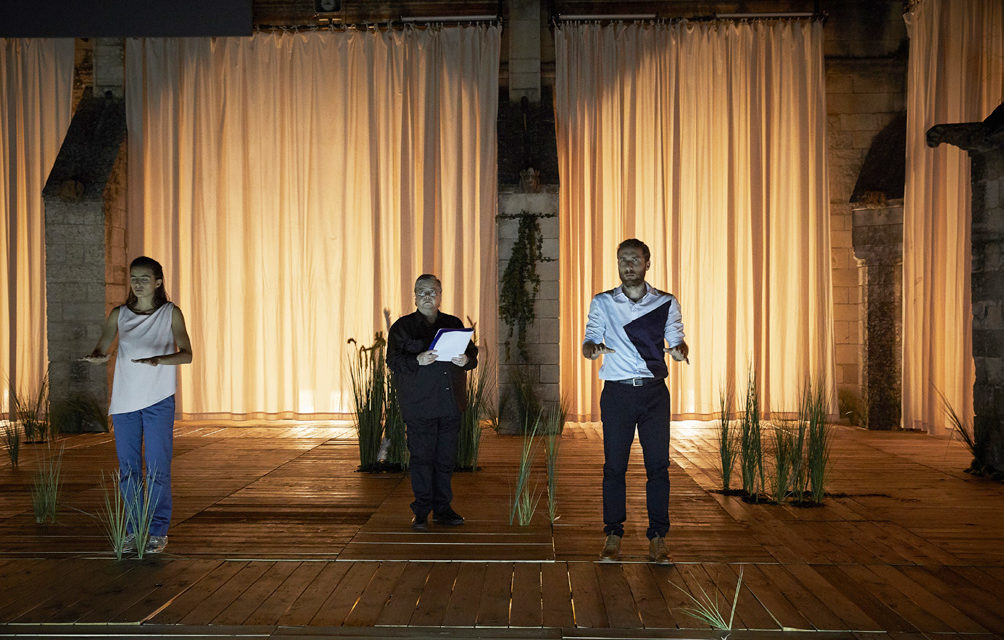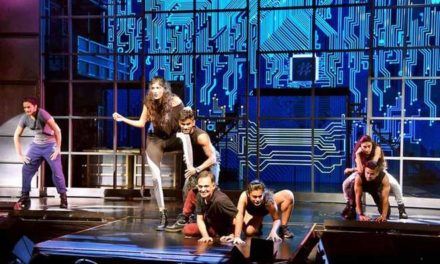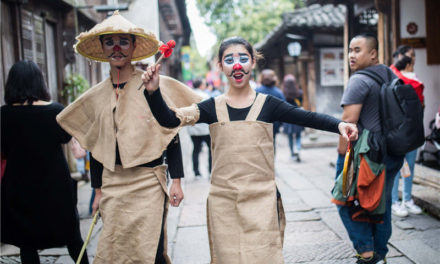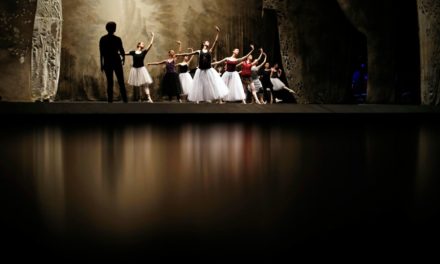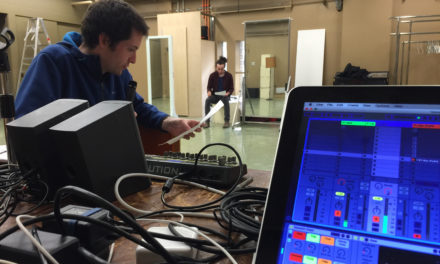This is Part 2 of a 2 part article. Read Part 1 here.
The contemporary performing arts scene
As well as new artistic trends developing within the contemporary scene, there has been the arrival of an entirely new generation of independent artists in key programming roles (on several scales), several independent companies getting a roof overhead and sharing resources–while others are shutting down–and new collectives coming together. There are also new, and influential, political players and significant changes in state funding models, which are being strongly contested. Municipalities are strengthening their cultural role and new centers are emerging while others strengthen their place. It’s a vibrant time for cultural programmers, and some key names are embracing new projects while others gain stronger tools. Youth theatre and circus and street arts are gaining added visibility, as is accessibility–in its widest context (physical accessibility, but also social and intellectual)–and artistic education. Internationalisation is a key objective (and already a reality, though undermined by a lack of funds). New artists and new venues are appearing but there’s also a real danger of extinction around the corner. At a mere 0.2% of the National Budget, the budget for culture is still insufficient for the vitality and broad horizons of its artistic and cultural agents.
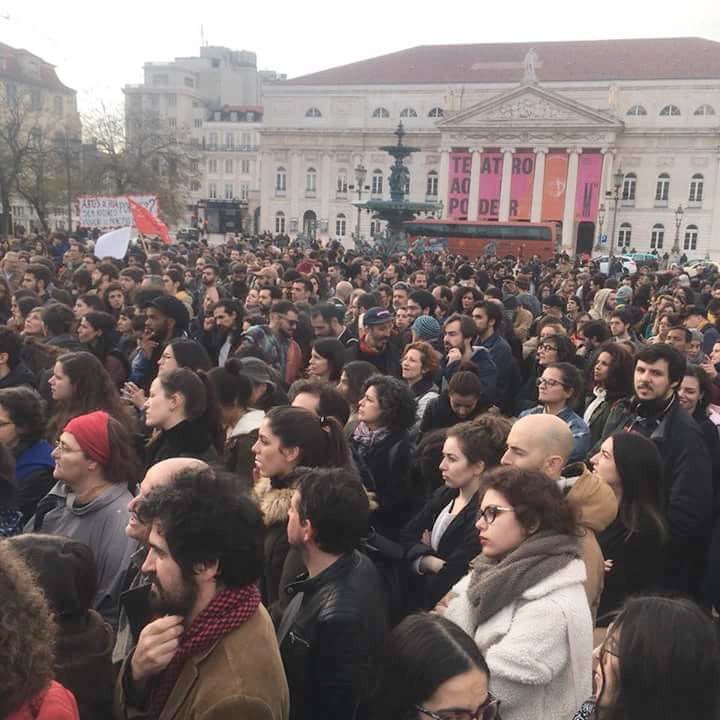
Artists demonstrating in front of the National Theatre, April 2018 (© Isabel Abreu)
At the time of writing, the arts world in Portugal is in the midst of a revolution. In 2016 a team of cultural professionals, including cultural programmer and administrator Miguel Honrado and dance critic, producer and researcher Paula Varanda, took on key political roles in a recently-reinstated Ministry of Culture (led by poet and diplomat Luís Filipe Castro Mendes). Their aim was to transform the somewhat precarious art system via a participatory debate and, in particular, to make changes to the way in which the public budget for arts would be distributed. In early 2018 their first results were announced and a strong reaction followed: the arts world (particularly the independent scene) took to the streets with an unprecedented display of solidarity, while mainstream media gave significant visibility to the protests and the Parliament and local powers questioned the government. In a matter of weeks, three consecutive amendments to the budget were proposed, another first for the country and the model for arts is said to be set to undergo several changes, with a lively debate underway between cultural agents and the government. However, these exciting times come with obvious uncertainty. At the time of writing, the amount of funding available and the way it will be allocated is yet to be confirmed. What follows is a necessarily incomplete and blurred picture, capturing the feeling of turmoil experienced by the performing arts sector in Portugal today.
State funding: overview and recent changes
The Portuguese state is bound by its Constitution to support and stimulate artistic creation in its diversity as well as promoting the circulation of quality cultural assets. However, state funding to culture has never amounted to more than 0.6% of the National Budget (NB). Funding peaked in 2005 with the European flow of Cultural Operational Program (POC) and then started shrinking. It was already at a significantly depleted level in 2011, when the austerity government cut 40% of funding for all artistic structures and the impact was devastating. Currently, the budget for culture equates to 0.2% of the NB, an estimated €480M. Of this sum, €17.6M is allocated to the arts support by DGARTES (the Portuguese Arts Council–Direcção Geral das Artes) and this increased to €19.2M when Prime Minister António Costa recently announced budget reinforcements.
Operating under the direct patronage of the Culture Secretary of State, DGARTES is the central branch that coordinates and executes the arts policy, distributing funding for the professional artistic activities of both independent companies and artists. As mentioned above, a new model for arts support was introduced in 2018, aiming to “stimulate arts creation, production, and diffusion, promote arts articulation with other sectorial areas and value artistic fruition as a tool to correct territorial and cultural, economic, social and human development asymmetries.” Decentralisation and internationalization are key areas within the current cultural policy, and this translates into several new funding lines–some already clearly defined, others still subject to change.
As mentioned, this model of fund attribution is under intense debate and subject to change. In general, funds are distributed via public calls, following evaluations by independent juries (though there are some exceptions) and according to established criteria, including geographical criteria that set out to fund organizations evenly across Portugal. This model aims to support and strengthen decentralization, circulation, and internationalization. In 2018, funding for artistic structures (on several scales, from author’s companies to companies linked to municipal venues) for the next biennial or quadrennial are to absorb the biggest chunk of the funds available from DGARTES. Independent artist’s companies and companies linked to municipal venues or to festivals and schools apply to the same funding line and, for the first time since state funding to professional artistic structures was organized in 1996, there is a Contemporary Circus and Street Arts stream, while structures based in the autonomous Azores and Madeira regions can also apply.
The Minister of Culture recently stated in Parliament that, compared with the last cycle of arts funding (2013-16), 48 new structures will be supported in this cycle and that average support to each structure has grown from €88,000 to €109,000. Provisional results show that 168 performing arts structures are funded (that of a total of 183, including visual arts structures). At the time of writing, final results are only available for Contemporary Circus and Street Arts. Recurrently-funded structures are shown here, while here is historic funding from 2013 to date (though with mixed models).
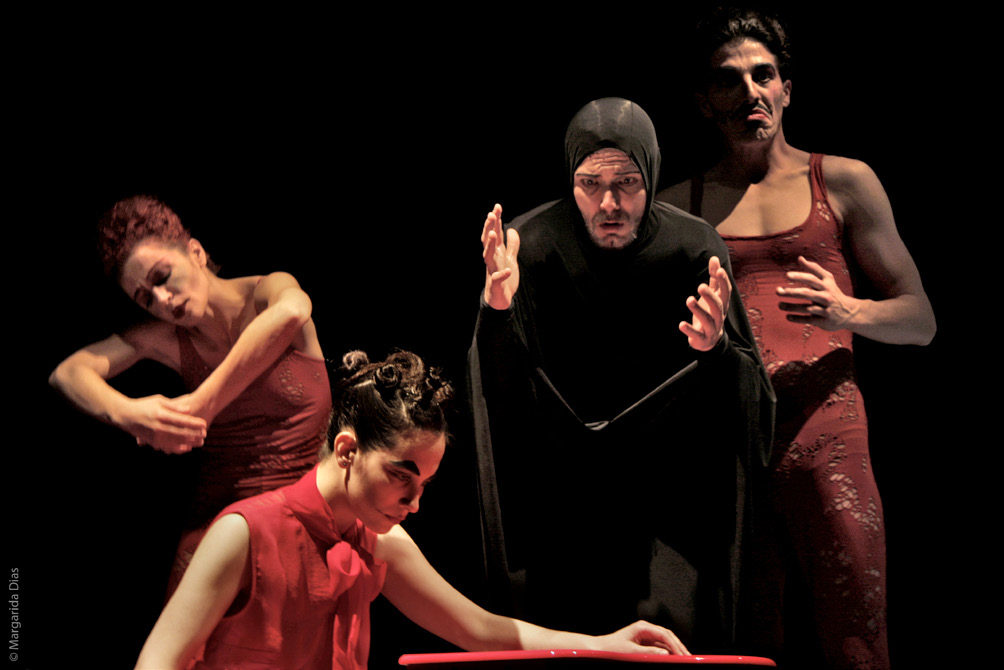
27 Bones by Tânia Carvalho (© Margarida Dias)
Parallel to the support given to artistic structures, the new model proposes a Partnership Support Program and a Projects Support Program (again subject to changes in form and funding), both with funds attributed directly and via an open call, with an overall amount provisionally set at €2.6M. The Partnership Support Program–replacing the ‘Tripartido’ Support (formerly attributed to projects by companies with support from municipalities/institutions and DGARTES) – supports the creation, circulation and programming of projects as well as audience development projects (provisional numbers point to €500,000 available in total); the Projects Support Program is set to finance internationalization (provisional numbers point to a fund of €500,000, distributed via two calls per year), programming, creation, audience development and national circulation (€1.4M) and publishing and training/educational projects (€200,000).
Please note that this is a rough and incomplete picture of a complex and evolving funding system and that all the information is very recent. Figures are drawn from information on the DGARTES
database and also information given by the Prime Minister and the Minister of Culture to Parliament – information that, although official, is meant to provide an indicative general overview.
Main venues funded by the State
The state directly supports the three national theatres through its Fundo de Fomento Cultural. These are the Lisbon-based National Theatre D. Maria II (€5.9M), the National Ballet Company (CNB)
and the national opera house S. Carlos National Theatre–funded via a structure that includes both OPART (€21.1M) and Oporto-based National Theatre of S. João–TNSJ (€5.4M). These figures encompass all costs and, as a reference, National Theatre D. Maria II has a programming budget of €1M. Lisbon’s CCB Foundation and Oporto’s Serralves Foundation and Casa da Música also receive state funding.
The current artistic director of National Theatre D. Maria II (TNDMII) is an actor, dramaturg and theatre director Tiago Rodrigues. A politically engaged left-wing artist whose work has received national and international acclaim (cf. his latest work Sopro, co-produced by Avignon Festival) Rodrigues was invited (by the right-wing government) to direct the TNDMII in 2014 and, at 37, became not only the youngest ever to assume the role in such a decisive institution but also, and more importantly, the representative of an artistic generation that grew up in the Portuguese performing arts scene during the 2000s. Prior to assuming the role, he had been fully exposed to vibrant national and international influences (he worked with Artistas Unidos and tg STAN collectives before creating his own structure Mundo Perfeito–that he folded when he became TNDMII’s director) and was supported by some key networks already in place (artistic residency center O Espaço do Tempo (EdT), Alkantara Festival and venues as Culturgest, Maria Matos Theatre, S.Luiz Theatre, Centro Cultural de Belém, Viriato Theatre and Centro Cultural Vila Flor are prime examples). In addition, he also had to deal with the scarcity of national means, became accustomed to collaboration as a decisive working tool and became acutely aware of the importance of clear working ethics and debate. Now in his second mandate, he has put together a program that is strongly anchored in diverse Portuguese creation–working with such names as Mónica Calle, Marlene Monteiro Freitas, Rui Catalão, Jorge Silva Melo or Miguel Fragata and Inês Barahona (whose play for young audiences Do Bosque Para A Noite will première at the Avignon Festival in 2018)–as well as employing charismatic international names–Biennial Artist in the City’s Christiane Jatahi is an upcoming example–and has worked on increasing visibility and support to emergent artists (Amélia Rey Colaço bursary), dramaturgy, and publishing. He has also crafted a model based on co-production, circulation and the development of decentralized partnerships, traversing the country (Eunice net) and also including international networks such as Apap. He currently directs the Ecole des Maîtres.
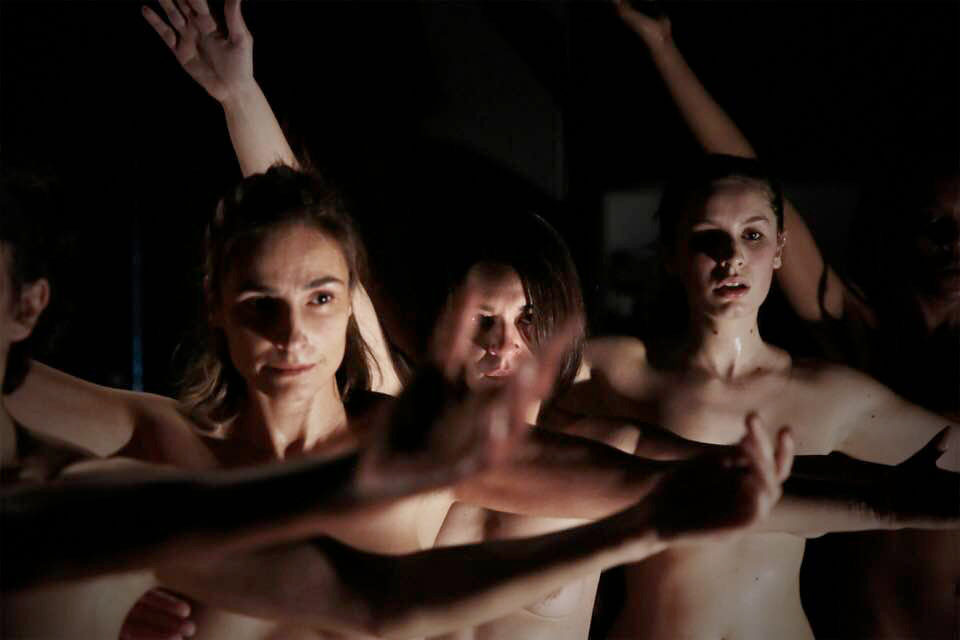
Ensaio Para Uma Cartografia by Mónica Calle (© Vitorino Coragem)Returning to the theatres, the National Theatre of S. João (TNSJ) houses three theatres in various locations: the São João National Theatre, the Carlos Alberto Theatre (TeCA) and the S. Bento da Vitória Monastery (MSBV). Its artistic director, Nuno Carinhas, a well-established artist, painter, set designer and theatre director with a career that has spanned a huge range of work with the independent performing arts scene, has put together a vast program that stages national, international, cross-disciplinary artistic work. This endeavor has been taken up alongside assessing director Nuno M. Cardoso and Pedro Sobrado, who was recently sworn in as president of the TNSJ board, a household name directly responsible for the publishing program Theatre Essays, among others.
Leading a charismatic programming politics since 2009, Carinhas has been crucial to co-producing the independent Oporto performing arts scene, especially during the privatization of Rivoli Theatre (from 2006 to 2013), when TNSJ hosted international festivals such as Dancem! and FITEI–the Iberian Theatre International Festival–both of which brought international artistic works to Portugal as well as co-producing local artists. Ultimately, this overarching program assures that the theatre can hold a stronger national and international position, integrating the UTE – European Union of Theatres, for example–as well as an educational effort targeting the development of knowledge of dramatic theatrical texts among teachers, critics, and general audiences.
Elsewhere, choreographer Paulo Ribeiro, a leading name within Portuguese dance, a programmer and the charismatic artistic director of the Viriato Theatre for over a decade (home to his own company, now directed by choreographers and dancers António Cabrita and São Castro), took over the programming of the National Ballet Company (CNB) in 2016. He started 2018 by launching a strong programming line, namely a retrospective of Tânia Carvalho’s work (in a cycle co-produced by Maria Matos and S.Luiz Theatres), and converting the studios Estúdios Victor Cordon–a beautiful rehearsal space located in Lisbon’s Chiado and usually shared by CNB and São Carlos performers–into a formal program of residencies, classes and artistic creation, open to performing artists and coordinated by choreographer Rui Lopes Graça.
Two years ago, the National Ballet Company (CNB) celebrated its 40th anniversary under the direction of Luísa Taveira, which has led the company to unprecedented crossovers. Initiatives such as collaborations with theatre companies or directors such as Cão Solteiro, Praga Theater, and Carlos Pimenta or Tiago Rodrigues directing its repertoire ran in parallel with a strong policy of inviting household names in choreography–Olga Roriz, Rui Horta or Vasco Wellenkamp, as well as Anne Teresa De Keersmaecker or Faustin Linyekula. Now on the board of administration of the Centro Cultural de Belém (CCB), Taveira is once again programming for the cultural arts centre by the river where she has been key to the creation of both Companhia Maior (an elder performers company that works under the direction of different performing arts creators) and BoxNova (a space for emergent artists). Furthermore, administrators such as Miguel Lobo Antunes and António Mega Ferreira have set the pace for decisive programming–for both large-scale national and international productions as well as close support and visibility to emergent Portuguese artists.
Finally, while the National Theatre of São Carlos, the Portuguese Opera House, is still tackling various political decisions, with budget austerity being the keyword, Oporto’s Casa da Música (Music House) is thriving under António Jorge Pacheco and his programming team’s direction. In the Serralves Foundation, meanwhile, the recently-appointed museum director João Ribas is already a household name, while historic key programmer for performance arts Cristina Grande and, in music, Pedro Rocha, are fundamental to the performing arts scene.
Please note that there are other public funds and that this map only examines the main ones supporting performing arts.
This article was originally published by IETM–International network for contemporary performing arts, Brussels in April 2018 as a part of their mappings series. Read the original mapping. It has been republished with permission.
This post was written by the author in their personal capacity.The opinions expressed in this article are the author’s own and do not reflect the view of The Theatre Times, their staff or collaborators.
This post was written by Maria João Guardão.
The views expressed here belong to the author and do not necessarily reflect our views and opinions.

